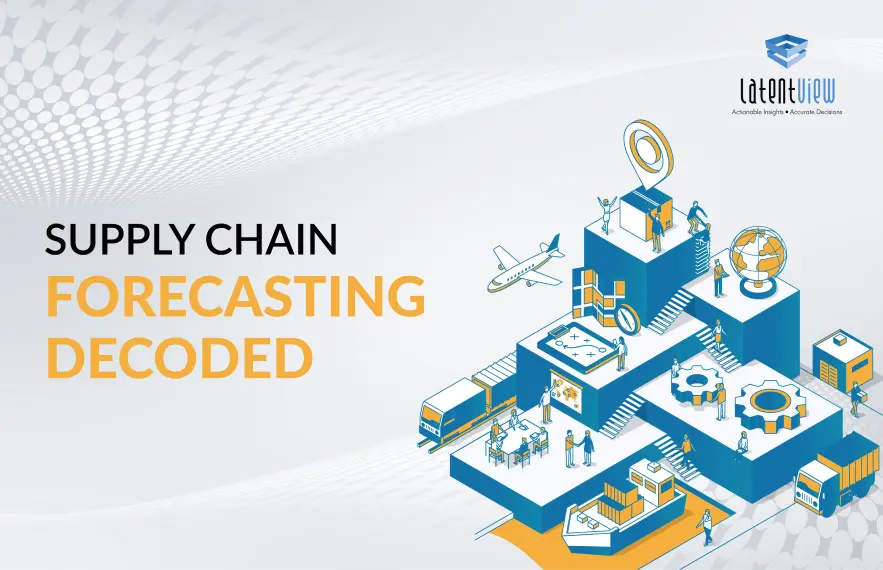Retail companies were understocked across product segments for most parts through the initial phases of the pandemic. The causes for stockouts were many and were difficult to isolate and track across a vast ecosystem of supply chain challenges. However, as time passed, companies scrambled to realign supply chains, and the artificial stimulus and low interest rates misled most to believe that the problems were transient. Companies began overstocking to remedy the longer lead times and supply side bottlenecks until earlier this year, when inflation reached new heights and customer spending began to slow down. The sudden change in consumer behaviour caught most retailers off guard, with S&P500 companies reporting close to 16% over stocking inventory in June, compared to the same time last year.
With time it began to emerge that what initially seemed transient in terms of inventory imbalances was more real than expected and that the underlying issues were difficult to identify and string together in relation to the impact on supply chain performance and business growth. One recurring theme throughout and after the pandemic, however, has been the need to establish optimal customer service levels (optimal availability) as the north star metric for businesses that constantly seek to align to an uncertain market for sustained growth. There is a need for a top-down approach that trickles down from the market and through the supply chain to initiate dynamic planning. Forecasting is one of the key drivers of this top-down approach. A company may have the most flexible and agile supply chain in the world in terms of substitute products and innovation, but if the company cannot accurately gauge the demand and consumer behavior for a product, none of the best practices that constitute the supply chain can be fully leveraged. In fact, one can argue that they are negated to an extent. Lost sales, market share, and profits are just a few of the growth-related metrics that are directly related to forecasting. Customer satisfaction, brand reputation, loyalty, and retention are some of the others.
Macy‘s recently reported a 17% increase in inventory levels and attributed the key cause to a lack of understanding of consumer behavior from a forecasting context within and across product segments. At LatentView Analytics, we focus on developing dynamic and advanced analytical forecasting models that capture a variety of unforeseen variables that include economic, social, online, consumer spending, seasonal, and promotional factors, to name a few- both leading and lagging. We specialize in associative and causal forecasting analytics by product categories through variable selection, feature engineering, and model building that cater specifically to product-related nuances. Different product segments have different driving factors that affect consumer behaviour and, therefore, the forecasts. Different products also have different nonlinear associations and causal models that provide accurate outcomes, and therefore employing an ensemble approach and constantly building innovative models based on changing trends is the need of the hour. Using traditional time series, smoothing, or single variable (sales-based) forecasting will only propagate a false notion of the real demand while inhibiting the growth prospects for a company when things are going downwards in terms of demand. That being said, most SAAS offerings and planning tools are quite costly to adapt to the rate of behavioural change in consumption, and this is not a good sign for future-looking enterprise capabilities and planning.
Accurate forecasting approaches can also mobilize e-commerce adaptability and deliver a competitive advantage to enable physical stores to maximize returns by converting their underutilized store spaces into e-commerce fulfillment capacities, aka. Dark stores, for the most profitable product segments, as determined by dynamic forecasting and understanding of consumer trends. This solution has 3 main benefits for a Retail Business:
- It maximizes and improves the SPF (Sales per sqft) for retail stores on an ongoing basis.
- It reinforces the need to use forecasting as a guiding light to maximize growth by allocating space to the most profitable e-commerce product segments. JOANN Stores, a special crafts retailer, aims to do just this in order to reduce overall inventory levels across all omnichannel formats. This approach again ties into accurate and advanced analytical forecasting across channels, a growing area of interest for retailers with CFOs looking to constantly develop resilient and agile supply chains in a post-pandemic world.
- It helps balance overhead and transportation costs across products through optimal inventory levels across channel formats and maximized turnover value.
One may argue that Ecommerce retail segments for clothing and luxury result in high transportation and return costs with increasing fuel prices. However, this does not dilute the need for accurate forecasting. If anything, it reinforces the need for accurate forecasting of consumer behaviour while accounting for variables like lost sales during stockouts, returns, and a variety of external economic and social variables mentioned earlier in the article.
The idea is that transient and residual factors can be misleading to create a positive sense of growth and wellbeing, as we saw for the most part of the first half of this year. For companies bearing the sudden brunt of a false economic promise, a relevant thought leadership principle from Herb Keheller applies well (at least in retrospect)- “Manage in good times so you’ll do well in the bad times.” And therefore, executing an innovative, consumption-driven use for adaptive forecasting and planning in a dynamic context is a key driver of continuous improvement to stay a step ahead of the competition always.




